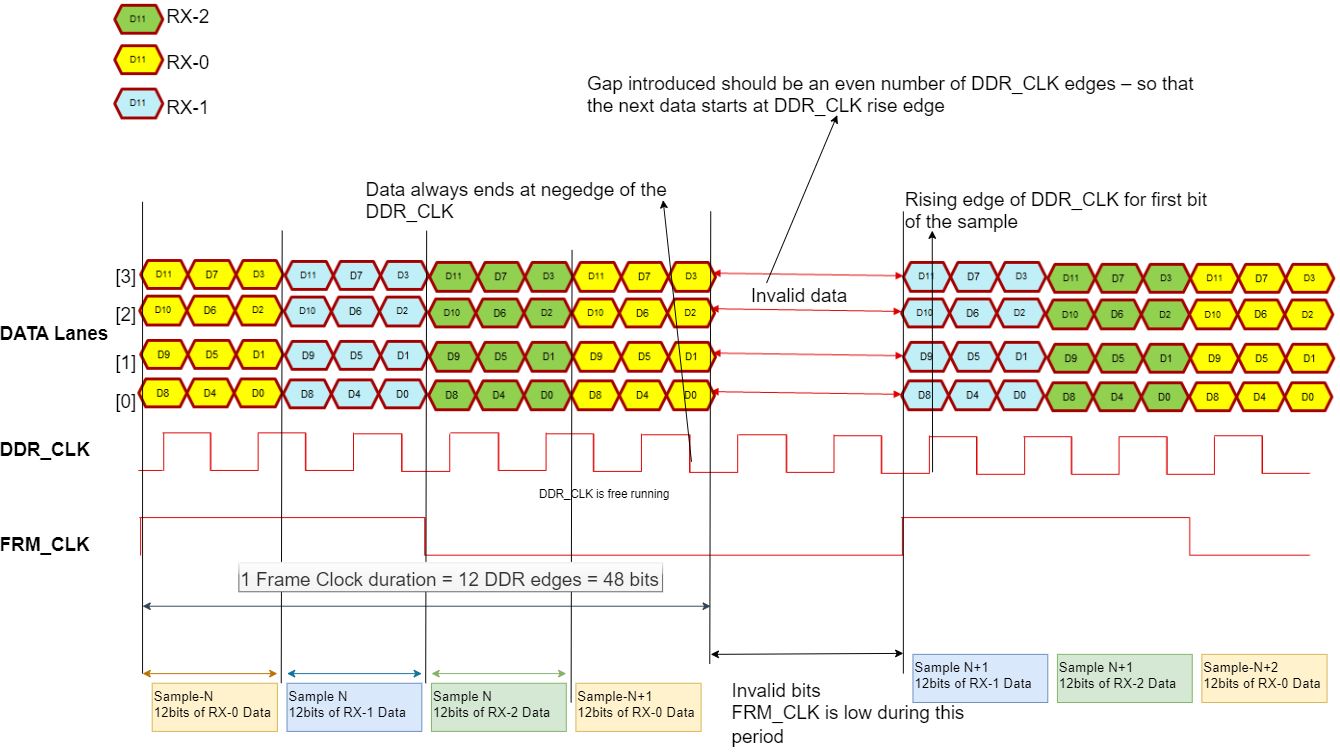SWRS296B July 2023 – June 2024 AWRL1432
PRODUCTION DATA
- 1
- 1 Features
- 2 Applications
- 3 Description
- 4 Functional Block Diagram
- 5 Device Comparison
- 6 Terminal Configurations and Functions
-
7 Specifications
- 7.1 Absolute Maximum Ratings
- 7.2 ESD Ratings
- 7.3 Power-On Hours (POH)
- 7.4 Recommended Operating Conditions
- 7.5 VPP Specifications for One-Time Programmable (OTP) eFuses
- 7.6
Power Supply Specifications
- 7.6.1 Power Optimized 3.3V I/O Topology
- 7.6.2 BOM Optimized 3.3V I/O Topology
- 7.6.3 Power Optimized 1.8V I/O Topology
- 7.6.4 BOM Optimized 1.8V I/O Topology
- 7.6.5 System Topologies
- 7.6.6 Internal LDO output decoupling capacitor and layout conditions for BOM optimized topology
- 7.6.7 Noise and Ripple Specifications
- 7.7 Power Save Modes
- 7.8 Peak Current Requirement per Voltage Rail
- 7.9 RF Specification
- 7.10 Supported Front End features
- 7.11 CPU Specifications
- 7.12 Thermal Resistance Characteristics
- 7.13
Timing and Switching Characteristics
- 7.13.1 Power Supply Sequencing and Reset Timing
- 7.13.2 Synchronized Frame Triggering
- 7.13.3 Input Clocks and Oscillators
- 7.13.4 MultiChannel buffered / Standard Serial Peripheral Interface (McSPI)
- 7.13.5 RDIF Interface Configuration
- 7.13.6 LIN
- 7.13.7 General-Purpose Input/Output
- 7.13.8 Controller Area Network - Flexible Data-rate (CAN-FD)
- 7.13.9 Serial Communication Interface (SCI)
- 7.13.10 Inter-Integrated Circuit Interface (I2C)
- 7.13.11 Quad Serial Peripheral Interface (QSPI)
- 7.13.12 JTAG Interface
-
8 Detailed Description
- 8.1 Overview
- 8.2 Functional Block Diagram
- 8.3 Subsystems
- 8.4 Other Subsystems
- 8.5 Memory Partitioning Options
- 8.6 Boot Modes
- 9 Monitoring and Diagnostics
- 10Applications, Implementation, and Layout
- 11Device and Documentation Support
- 12Revision History
- 13Mechanical, Packaging, and Orderable Information
Package Options
Mechanical Data (Package|Pins)
- AMF|102
Thermal pad, mechanical data (Package|Pins)
Orderable Information
7.13.5.2 RDIF Data Format
 Figure 7-16 RDIF Data Format
Figure 7-16 RDIF Data FormatThe samples are sent one channel by one channel as shown in the diagram above. All the 12-bits of one channel are sent on 4 data lanes in 3 DDR_CLK edges, followed by next RX channel.
The frame clock (FRM_CLK) spans 12 DDR_CLK edges and 48 bits are sent in 1 FRM_CLK
The FRM_CLK can have gaps in between. This is required as the interface rate is greater than the incoming rate
DDR_CLK is continuous.
DDR_CLK is generated from 400MHz ADC CLK (one of the ADC CLKs) - selected for the DFE. It is the same 400MHz clock selected for DFE.
New sample always starts at the rise edge of the DDR_CLK
The FRM_CLK is valid for the entire data bit and is meets the Tsu/Th wrt DDR_CLK.